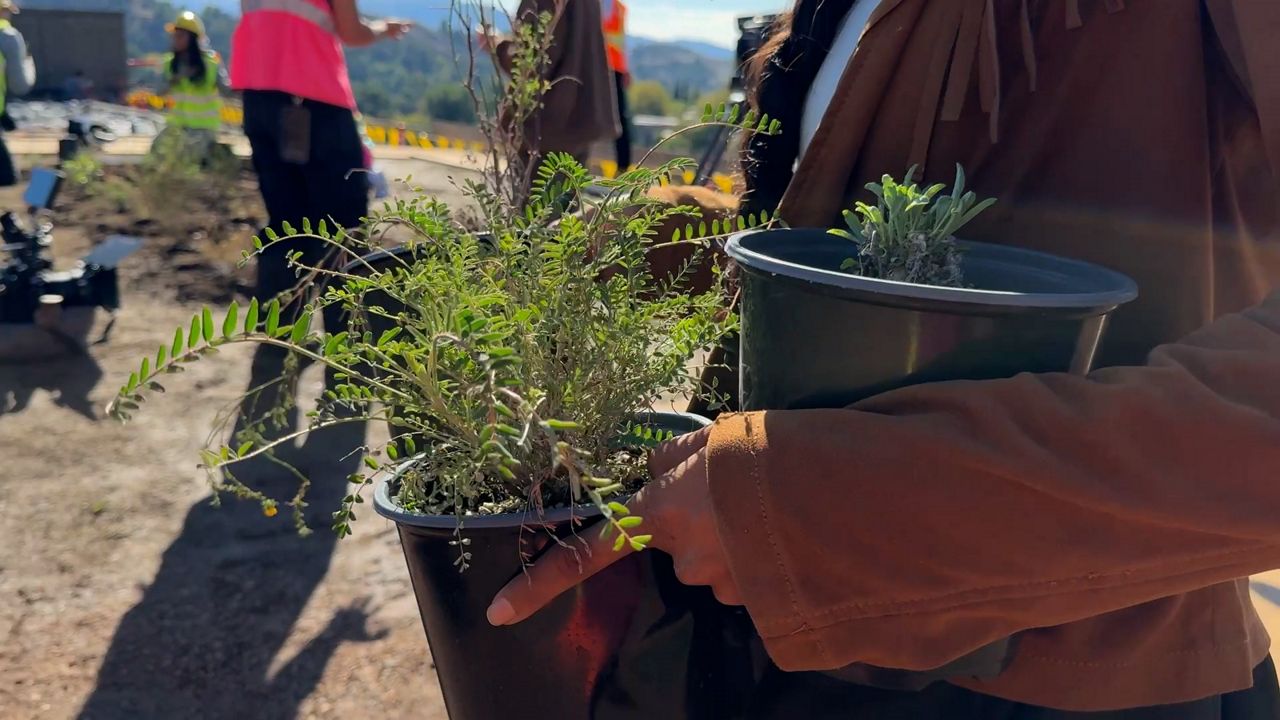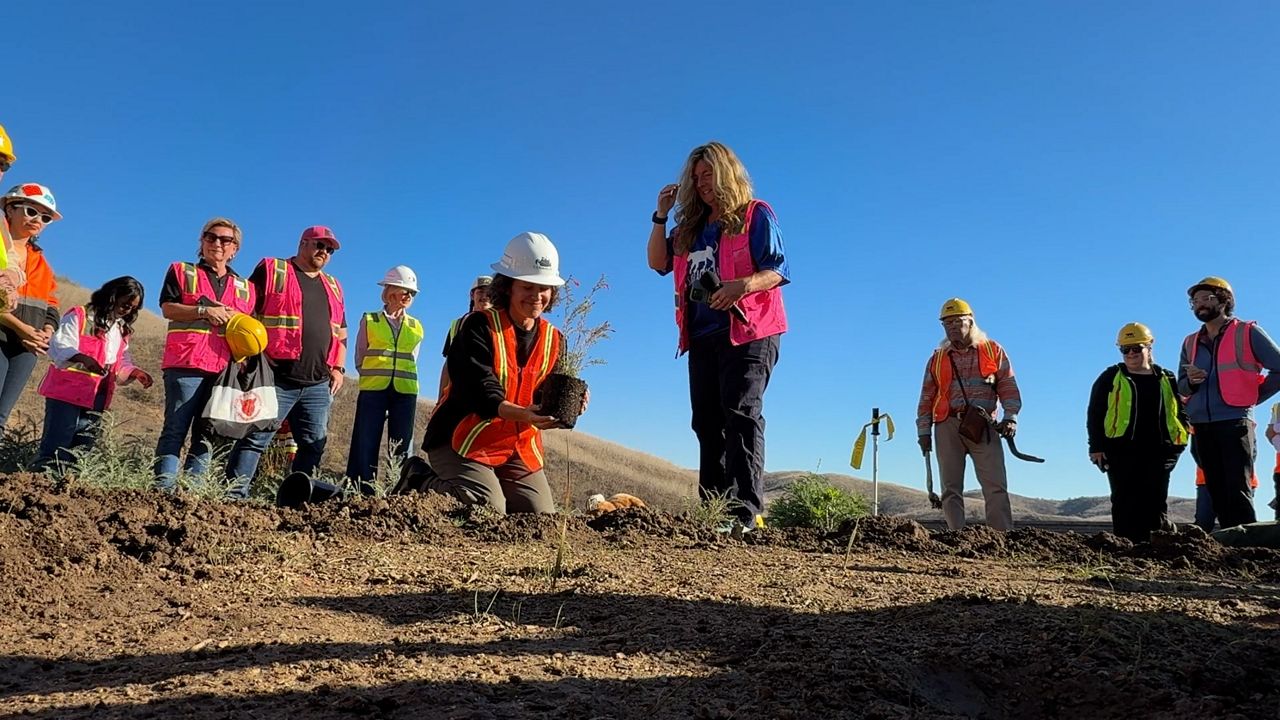AGUORA HILLS, Calif. — “First plant on the crossing,” Beth Pratt of the National Wildlife Federation shouted Monday morning as she knelt atop the Wallis Annenberg Wildlife Crossing.
She dedicated the first plant she placed to actor Leonardo DiCaprio, who she said was an early believer in the project back when it was just the seed of an idea. “For Leo!” she yelled triumphantly, shaking the dirt from her hands.
“This is probably my favorite part of the entire 14 years,” she explained. While much of the Save LA Cougars campaign finds her giving talks or sitting at a computer, this is the moment she’d been awaiting. “It’s actually getting my hands in the dirt. Best milestone ever.”
What You Need To Know
- Over the past few years, a million hyperlocal seeds were collected from within a five-mile radius of the Wallis Annernberg Wildlife Crossing and grown at a nursery set up for this project
- All told, over 6,000 plants representing 30 different species will be transferred to the meticulously crafted soil base that’s made up of multiple layers and enriched with local fungi
- The world’s largest wildlife crossing is expected to be completed in November 2026
- The first planting occurred during Urban Wildlife Week, which will culminate this Saturday with the 10th annual P-22 Day Festival in Griffith Park
It’s been a long and carefully planned road to get here. In 2022, Katherine Pakradouni helped build a native plant nursery specifically for the project. She collected over a million hyperlocal seeds, specifically sourced from within a five-mile radius.
Those seeds have now grown and matured and are being transferred to the top of what will eventually be the world’s largest wildlife crossing. Jose Campos and Jewlya Samaniego are co-managers of the plant nursery. They beamed over their babies, proudly explaining their favorite species and its attributes. Deer plant. California fuchsia. Purple needlegrass. Samaniego admits it’s bittersweet to see them settle into their new home.
“I’m like, don’t leave. But I know you need to leave,” she laughed. “It’s like a mommy saying ‘Bye. And I’m going to come check you later.’”
All told, over 6,000 plants representing 30 different species will be transferred to this meticulously crafted soil base, but already they have some company. A cover crop of Santa Barbara Milk Vetch has grown on site over the past few months.
“Just to kind of get the microorganisms moving,” Campos explained, “get the soil roots established.”
“It also has like cultural traditions within the Chumash for a lot of medicinal purposes,” Samaniego added. “So it was great to…also reconnect with this plant relative.”
Reconnection is what the Wallis Annenberg Wildlife Crossing is all about — stitching together a landscape long fragmented by the 101. One result of that fragmentation is a loss of biodiversity that threatens the local mountain lion population.
“Recreating this habitat across the freeway, it’s hard to put in words what it means,” Pratt said, “but what it really does mean is these mountain lions and monarch butterflies and all this wildlife is going to have a shot.”

(Spectrum News/Tara Lynn Wagner)
While many of the project’s key players were on hand, including the design team and Caltrans crews, there were two notable absences. One being members of the National Park Service, whose 20-plus year study of the LA area cougars was one of the catalysts for the crossing. Pratt said she was sad and angry that the government shutdown excluded them from marking this milestone.
“It is shameful that because of the shutdown they are not here to celebrate their hard work,” she said.
The other keenly felt absence, of course, was Wallis Annenberg, who died just a few months ago. Pratt stressed that without Wallis’ support and vision, the bridge that bears her name would never have gotten off the ground.
“Although she’s not here physically, she’s here in spirit,” Pratt said. “She helped do this. This is her legacy.”
It’s a legacy that Pratt said will continue to support local wildlife for years to come, just like this budding future habitat.
